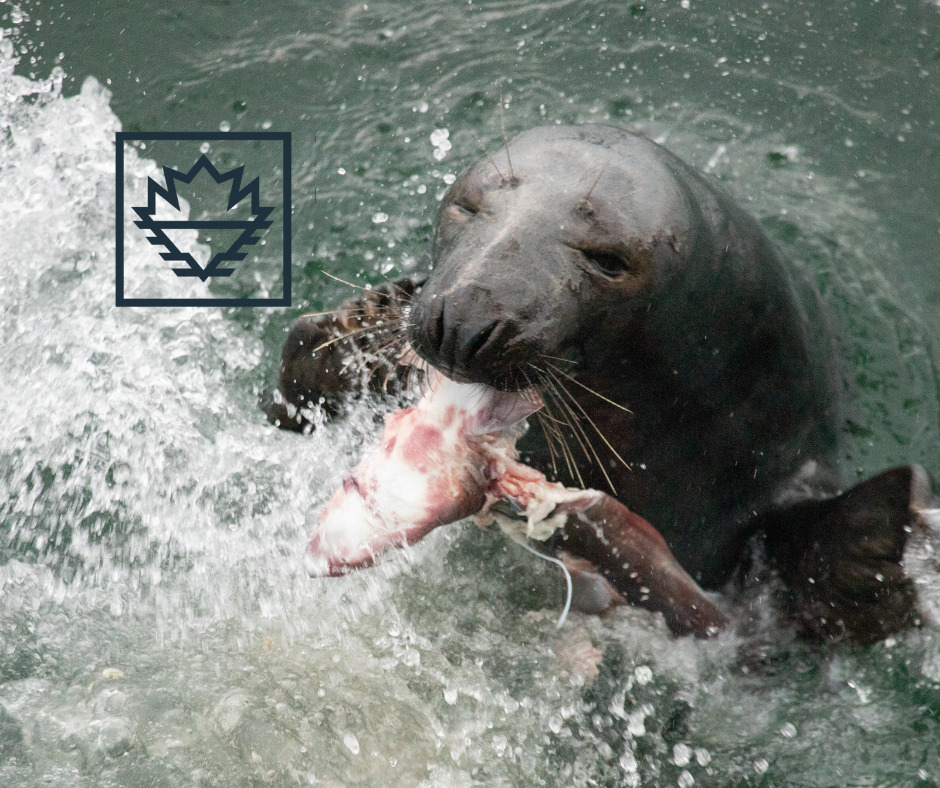Please tune in to this podcast episode starting at 11:11. In this engaging interview, Paula Gale engages in a conversation with Romy Vaugeois, the Program Manager of the Seals and Sealing Network about Canadian Seal Products’ new campaign “Good for you, good for the environment”.
Paula Gale: Welcome, everyone! Today, we have a fascinating discussion about the allure of seal products. In some regions, wearing seal fur, sporting seal jewelry, and even incorporating seal oil into your diet is not just a tradition but a status symbol. We recently spoke with Doug Chiasson from the Fur Institute about their campaign, “Canadian Seal Products: Good for You, Good for the Environment.” But we wanted more insight into this. So, today we have Romy Vaugeois with us, who is the Program Manager of the Seals and Sealing Network. Welcome, Romy!
Romy Vaugeois: Hi, Paula. It’s a pleasure to be here.
Paula Gale: It’s lovely to have you. While seal products are well-accepted in some regions, what’s the perspective in Quebec, particularly in Montreal and surrounding areas?
Romy Vaugeois: In Quebec, outside of Newfoundland, seal products are most accepted. We have a growing presence of items like fur products, boots, and mitts in more retailers. However, there’s still work to be done in terms of education and acceptance. It’s becoming more normalized, but there’s room for improvement.
Paula Gale: That’s interesting. Now, who is the primary target audience for your marketing campaign?
Romy Vaugeois: Our campaign currently focuses on three markets: omega-3 oils for people and pets, locally designed garments and accessories, and natural seal meat. Through a national survey, we’ve identified two key groups with a higher potential to buy seal products. The first is what we call “millennials foodies,” aged 30 to 45, primarily located in Ontario and Quebec. The second group, known as “Health groupies,” consists of people aged around 30 to 59, mainly in Ontario. A significant portion of this group also owns pets, which is why we are directing our efforts towards them.
Paula Gale: You mentioned pet products. Is there commercially available seal-based pet food?
Romy Vaugeois: Not yet, but there’s a growing effort to promote this market. We’ve been working with industry players to develop seal pet food and treats. It’s gaining traction, and you can already find seal oil, which is beneficial for pets, online and in various pet stores.
Paula Gale: It’s great to know. Now, your organization launched an education campaign in 2021. Have you seen any measurable success from it?
Romy Vaugeois: Absolutely. We primarily ran a digital campaign, which worked well even during the COVID pandemic. We conducted a survey before and after the campaign, and the results were promising. We observed a 26% increase in people’s willingness to try seal products after seeing our ads. So, there’s clear progress.
Paula Gale: That’s impressive. What are the main challenges in raising awareness and changing people’s perceptions about seal products?
Romy Vaugeois: The primary challenge is education and dispelling misconceptions. There have been negative campaigns from activists in the past, leading to misinformed views. Our “Good for You, Good for the Environment” campaign aims to educate people about the benefits of seal products for their health and the environment. It’s a matter of getting the word out there and changing people’s minds.
Paula Gale: It sounds like you’re making progress. What’s the initial reaction to your latest marketing campaign?
Romy Vaugeois: So far, the response to our current campaign has been positive overall. We’ve received very few negative comments on social media. We’re still collecting data, but the positive feedback greatly outweighs the negative. People seem receptive to our message.
Paula Gale: That’s great to hear. Can you share some examples of the negative comments you’ve encountered?
Romy Vaugeois: One recurring comment pertains to the idea that seals should be left to control their own population. We address this by explaining the impact of seal consumption on marine ecosystems, clarifying the need for responsible management.
Paula Gale: What’s next for this campaign?
Romy Vaugeois: Our campaign, “Good for You, Good for the Environment,” will continue throughout the holiday season. We’ll keep pushing our videos and social media ads, targeting various age groups on platforms like Facebook and Instagram. Additionally, we’ll work with digital media and aim to reach more people in the lead-up to Christmas.
Paula Gale: Thank you for sharing this information, Romy. That was Romy Vaugeois, Program Manager of the Seals and Sealing Network. For more details, you can visit CanadianSealProducts.com.



